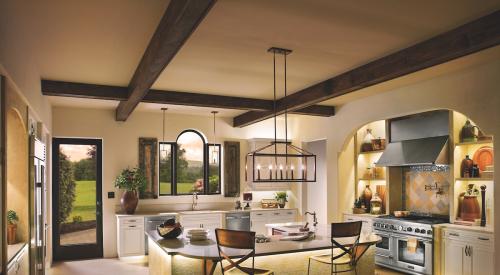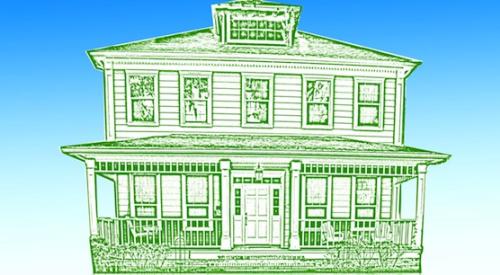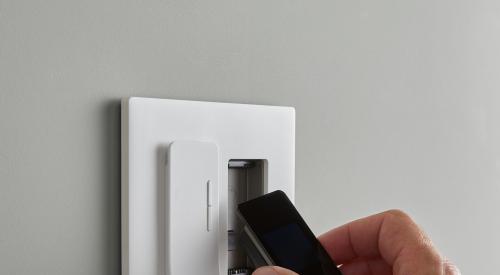The Environmental Protection Agency and the U.S. Department of Energy say the average American household spends $1,400 a year on energy bills. With rising fossil fuel prices, maximizing energy efficiency in the home is one way builders can alleviate stress on our natural resources.
In fact, according to Energy Star, the government-backed rating system and organization for energy efficiency, if every household in the U.S. replaced one light bulb with a newer Energy Star-qualified compact fluorescent light bulb, it would prevent enough pollution to equal removing 1 million cars from the road. CFLs use 66 percent less energy than a standard incandescent bulb and last up to 10 times longer.
Let There Be LightUnfortunately for many builders, lighting is often an afterthought in the design process and considered decor when more emphasis should be given to wiring considerations and lighting schemes. A lighting plan should include both the location and the specifications of fixtures and controls in the architectural plans. Decorative, task, focal and safety lighting should be addressed in the lighting plan and specifications, along with the ambient lighting prescribed in the codes.
What's Available?One of the most exciting advances to emerge in the past few years is LED (light emitting diode) technology, new to the residential lighting scene. LED uses 90 percent less electricity than incandescents. Because of LED's long life and additional up-front cost, it should be used in heavy-traffic areas. But LED allows builders to get more creative, because an LED is about the same size as a Christmas-tree light.
The Latest BreakthroughsHome networks for integrating lighting and heating schemes are a rapidly emerging technology. Firms such as Legrand, Lutron, CentraLite and Square D have come up with home automation systems that are the beginnings of true "smart" houses. Researchers at the University of California-Berkeley developed automated lighting, automated shades, Venetian blind systems, sensors and power measurement. With the University's software, homeowners can control their overhead lights and motorized blinds by internet.
The team is working with two ballast manufacturers who have already decided to use the university's technology to embed the ballast interface in a network connector to control lighting schemes remotely. Another firm would put the team's technology in occupancy sensors and daylight control photosensors.
| INCANDESCENT | CFL | LIFETIME SAVINGS |
| 30/40 watt | 11 watt | $17 |
| 50 watt | 13 watt | $22 |
| 60 watt | 15 watt | $28 |
| 75 watt | 20 watt | $33 |
| 100 watt | 25 watt | $51 |
| 120 watt | 30 watt | $56 |











